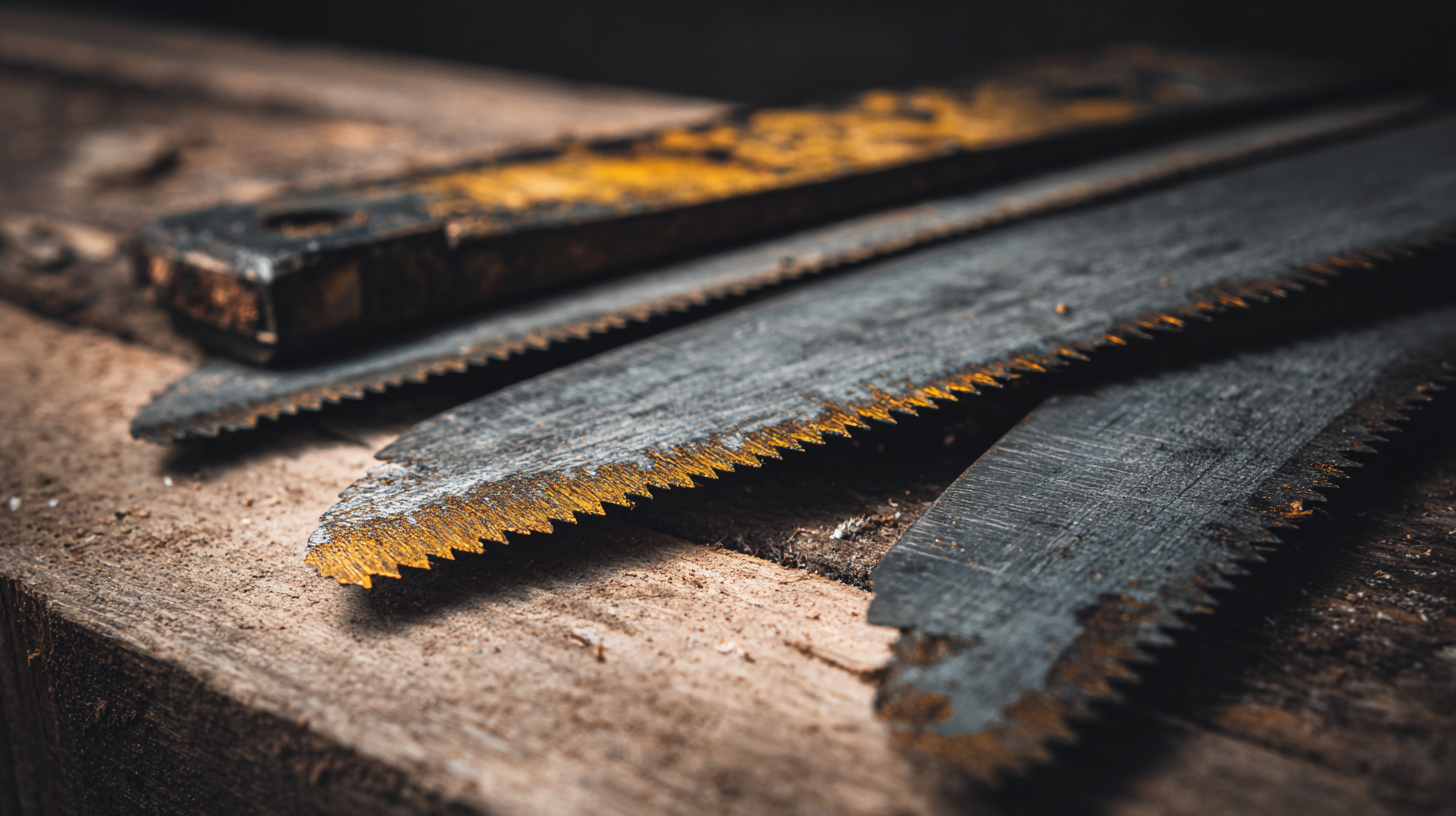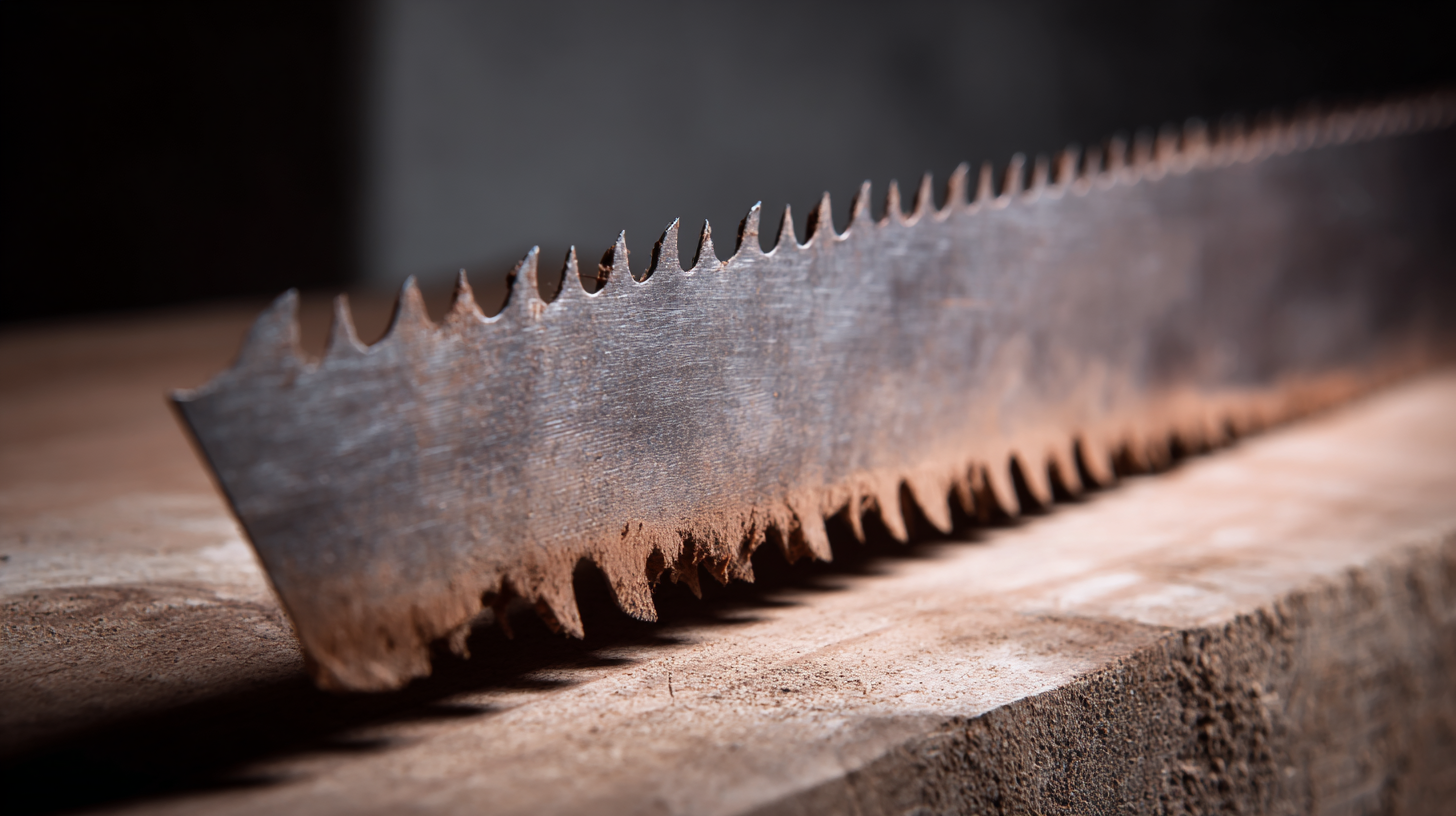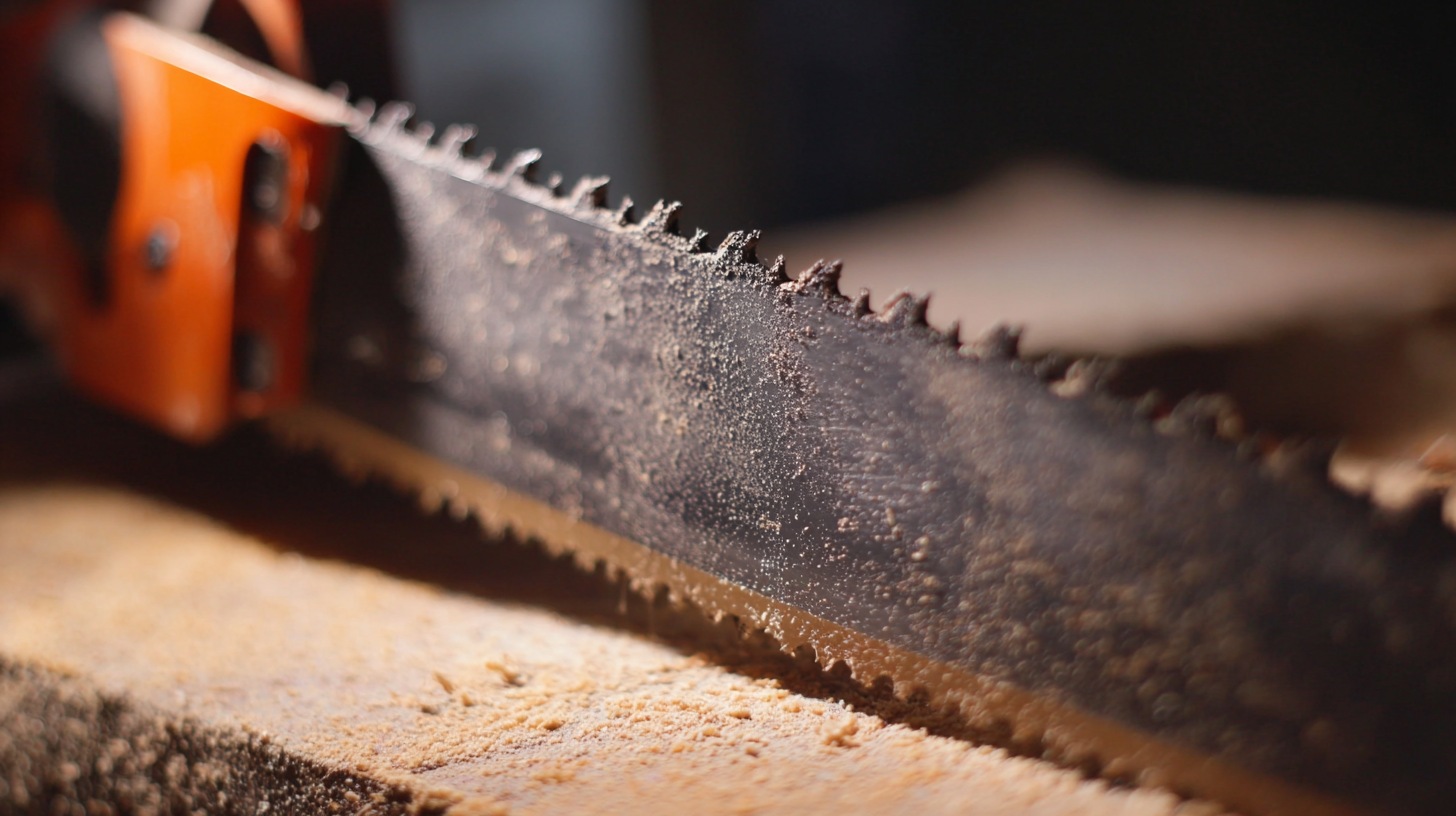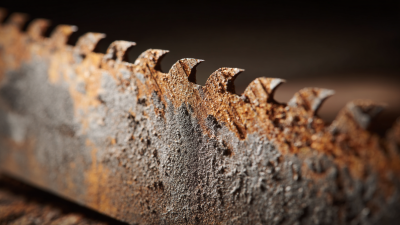Challenges Faced When Using Long Sawzall Blades For Wood: What You Need to Know
Table of Contents
- Understanding the Unique Properties of Long Sawzall Blades for Wood Cutting
- Common Challenges When Using Extended Blades for Precision Cuts in Wood
- How Long Blades Affect Control and Maneuverability During Cutting
- Comparing Long Sawzall Blades to Standard Length Blades for Wood Projects
- Tips for Effective Use of Long Sawzall Blades in Wood Applications
- Maintenance and Care for Long Sawzall Blades to Ensure Longevity
- FAQS
- Conclusion
- Related Posts
When it comes to woodworking these days, more folks—whether pros or DIY lovers—are turning to Long Sawzall Blades For Wood. And honestly, they’re pretty great for certain jobs. That said, they aren’t flawless, and using them the right way can be tricky. I read somewhere (shoutout to the Power Tool Institute) that if you don’t handle these blades carefully, they tend to wear out faster and don’t cut as smoothly, which can really mess with the final look of your project.

Wenzhou Yichuan Tools Co., Ltd., started back in 2003, is really good at making top-notch electric tool accessories—stuff like jigsaw blades and reciprocating saw blades—designed specifically to help fix these common issues. Whether you’re a seasoned woodworker or just messing around in your garage, knowing about these challenges—and how our products can help—might just be the game-changer you need to step up your woodworking game and get better results without all the frustration.
Understanding the Unique Properties of Long Sawzall Blades for Wood Cutting
When you're working with long Sawzall blades for cutting wood, it’s really helpful to get a feel for what makes them special and how they perform. These blades, usually between 12 and 18 inches long, give you that extra reach — perfect for slicing through
thick timber or getting into those tricky spots. I’ve read in a report by the Woodworking Industry Association that blades over 12 inches can handle wood up to 6 inches thick pretty easily. That makes them absolute game-changers for folks in construction or demolition jobs.
But here’s the thing — the longer blades can be a bit tricky to handle. According to a study from the Power Tool Institute, they tend to whip around or bend a little while you're using them. That could mess up your cuts or even cause damage to your workpiece. So, it’s super important to keep steady pressure and try to stay consistent with your cutting angle. Also, some blades, like bi-metal ones, have special tooth designs that help them last longer and cut more smoothly, giving you cleaner finishes and lowering the chance of kickback. Basically, understanding these little quirks can make a big difference when you're trying to get the most out of those long Sawzall blades for woodworking projects.
Common Challenges When Using Extended Blades for Precision Cuts in Wood
So, when you're using those really long sawzall blades for precise woodworking, there are a few things you should keep in mind—stuff that both newbies and seasoned pros run into. One big challenge is that these extended blades tend to bend or flex more during cutting. And honestly, that can mess with your accuracy. Especially if you're trying to do some detailed or intricate cuts, flexing can lead to uneven edges, which means more sanding or touching up later. That obviously adds time and effort to your project.

Plus, controlling a long blade isn’t always a walk in the park. Unlike shorter blades, which tend to be more stable and easier to manage, longer blades can make the saw drift or wobble, especially when tackling thicker materials. A lot of people say that maintaining a steady hand and applying consistent pressure helps, but yeah, it’s still tricky and takes some practice. Interestingly, recent reviews and user comments suggest that in many cases, shorter, specialized blades might actually give you a cleaner cut for certain projects. So, you’ve gotta ask yourself—does length really give you that much of an advantage here? Understanding these little quirks can help you pick the right tools for your specific project, saving you time and frustration down the road.
How Long Blades Affect Control and Maneuverability During Cutting
When you're working with long sawzall blades for cutting wood, things can get pretty tricky—controlling the tool and steering it around can be a real challenge. I read somewhere that longer blades, while great for making deeper cuts, tend to feel a bit unstable during use. That instability often shows up as more vibration, which makes it tough to get precise cuts, especially if you're trying to work in tighter spots. Professionals often say that handling these longer blades takes more effort — especially when you're going around curves or trying to cut detailed designs in wood.

Plus, the length of the blade also affects how fast and efficiently you can cut. According to some industry folks, longer blades can slow down your cutting speed by up to 20%. That's mainly because they’re heavier and require more control from the operator. So, trying to make a straight cut with a longer blade might feel like it’s a bit sluggish or lagging, which can be pretty frustrating.
At Wenzhou Yichuan Tools Co., Ltd., we totally get these issues, which is why we focus on designing high-quality reciprocating saw blades that are easier to maneuver. Our goal is to help both pros and DIYers keep better control so they can finish their projects more smoothly and accurately.
Comparing Long Sawzall Blades to Standard Length Blades for Wood Projects
When you're choosing between long Sawzall blades and the standard ones for your wood projects, it's really important to think about their individual strengths and weaknesses.
Longer blades, usually somewhere between 12 to 36 inches, give you that extra reach—perfect for cutting through thicker stuff or reaching into tight corners.
But, honestly, their length can make controlling them a bit tricky. I remember reading a report by the American National Standards Institute (ANSI) that mentioned how longer blades tend to be harder to handle, which can lead to less precise cuts, especially if you're working on detailed or delicate designs.
On the flip side, the standard-length blades—typically around 6 to 12 inches—are more versatile and easier to maneuver.
According to a study from the Woodworking Machinery Manufacturers of America (WMMA), folks actually prefer these for more detailed work because they're lighter and just easier to control.
Plus, they tend to stay steadier during cuts, so there's less chance of bending or breaking, which is actually pretty common with those longer blades.
In the end, your choice should really depend on what the project calls for—whether you need more reach or more control.
It’s all about balancing those two things based on what you’re trying to do.
Tips for Effective Use of Long Sawzall Blades in Wood Applications
When you're working with long Sawzall blades for cutting wood, there are a few things to keep in mind—these blades can present some unique challenges. For one, keeping control while cutting is super important. Since these longer blades tend to flex or bend a bit, it can be tricky to make perfectly straight cuts. My tip? Try to keep a steady hand and hold the saw firmly—that really helps. Also, if you're cutting through dense or hardwood, those longer blades might dull faster than you'd think, so it's a good idea to change or sharpen your blades regularly to keep things moving smoothly.
To get the most out of your long Sawzall blades, I’d recommend a couple of simple tricks. Start slow and steady—don't rush the cut. This way, you’ll have better control, and the blade won't get stuck or bind up. Picking the right blade is key too. For softer woods, blades with more teeth give a smoother finish, while bigger teeth are better if you're rough-cutting or dealing with tougher wood. Basically, using the right techniques and the proper blades can really make your cutting job easier—and even kinda enjoyable!
Maintenance and Care for Long Sawzall Blades to Ensure Longevity
When you're working with long Sawzall blades for woodworking, taking proper care of them is super important if you want them to last and work well. One thing to watch out for is making sure the blades stay free of gunk and sap that can build up when you're cutting. After each project, it’s a good idea to give the blades a quick clean—using some degreaser, soap, and water—and then drying them off thoroughly. Trust me, keeping them clean helps them perform better and also wards off rust.
Another tip is how you store those blades. Instead of just tossing them into your toolbox or drawer—where they can get banged up or dull faster—it’s better to use blade guards or keep them in a dedicated case. This little step protects the cutting edge and even stops them from bending or getting damaged. Also, don’t forget to give your blades a regular once-over. Check for any dullness, chips, or wear and tear. If you notice anything off, swapping them out early means cleaner cuts and less chance of messing up or getting hurt. Keep up with these simple maintenance habits, and you’ll get way more out of your long Sawzall blades for all your woodworking adventures.
Challenges Faced When Using Long Sawzall Blades For Wood: What You Need to Know - Maintenance and Care for Long Sawzall Blades to Ensure Longevity
| Challenge | Description | Maintenance Tip | Expected Longevity |
|---|---|---|---|
| Bending | Long blades are prone to bending under pressure. | Ensure proper alignment during cuts and avoid excessive force. | Approximately 6-12 months with proper care. |
| Worn Teeth | Teeth can dull quickly, especially with hardwood. | Regularly inspect and replace blades when necessary. | 1-2 years with routine inspections. |
| Vibration | Long blades can create excessive vibration during use. | Use anti-vibration grips and maintain a steady pace. | Varies depending on user technique. |
| Heat Build-Up | Excessive friction can cause overheating. | Apply cutting fluid for lubrication and cooling. | Usually 1-3 years with cooling measures. |
| Misalignment | Long blades require precise alignment to avoid damage. | Check the blade alignment before each use. | Maintaining alignment can extend lifespan significantly. |
FAQS
: Long Sawzall blades can introduce instability during operation, leading to increased vibration and making precise cuts difficult, especially in tighter spaces. Professionals report that handling longer blades requires more effort to maintain direction, particularly when navigating curves or intricate designs.
Longer blades can reduce cutting speed by up to 20% due to their additional weight and the need for greater operator control, which can detract from overall performance during straight cuts.
Long blades, ranging from 12 to 36 inches, are best for cutting through thicker materials or accessing tight spots, making them ideal for certain applications despite challenges in precision.
Standard-length blades, typically 6 to 12 inches, provide better versatility and enhanced maneuverability, making them easier to handle and more stable during cuts, which is crucial for detailed tasks.
Long blades are more difficult to control, which can result in less accurate cuts and increases the risk of bending or breaking compared to standard-length blades.
The choice should be dictated by the specific requirements of the project, balancing the need for reach against the need for control and precision in the cuts being made.
Conclusion
When you're working with Long Sawzall Blades for Wood, it’s pretty important to get a handle on their unique traits and the usual hiccups they can cause. These longer blades are great because they can reach deeper cuts, but at the same time, they can be a bit tricky to control, especially if you’re aiming for precision. Because of their length, manuvering them can feel a bit awkward, which is something to keep in mind—especially when tackling more detailed wood projects.
To get the most out of these blades, it helps to follow some simple best practices during cutting and to keep them well-maintained. Taking good care of your blades doesn’t just make them last longer; it also keeps your cuts cleaner and more accurate. Whether you’re a pro or just a DIY enthusiast, high-quality blades from Wenzhou Yichuan Tools Co., Ltd. can really make a difference, making your woodworking projects easier and more effective.
Related Posts
-

Exploring the Versatility of Long Sawzall Blades for Wood: A Guide to Selection and Use
-

China Manufacturing Thrives Amid US China Tariff Challenges with Best Sawzall Blade Insights
-

Top 10 24-Inch Sawzall Blades from Chinese Manufacturers at the 137th Canton Fair
-

Global Trust in Chinese Manufacturing Discover the Best Sawzall for Cutting Metal
-

Exploring the Future of Best Sawzall Blades Metal Trends for 2025 Global Buyers
-

5 Essential Benefits of Using Carbide Grit Sawzall Blades in Heavy-Duty Industrial Applications
Blog Tags:





